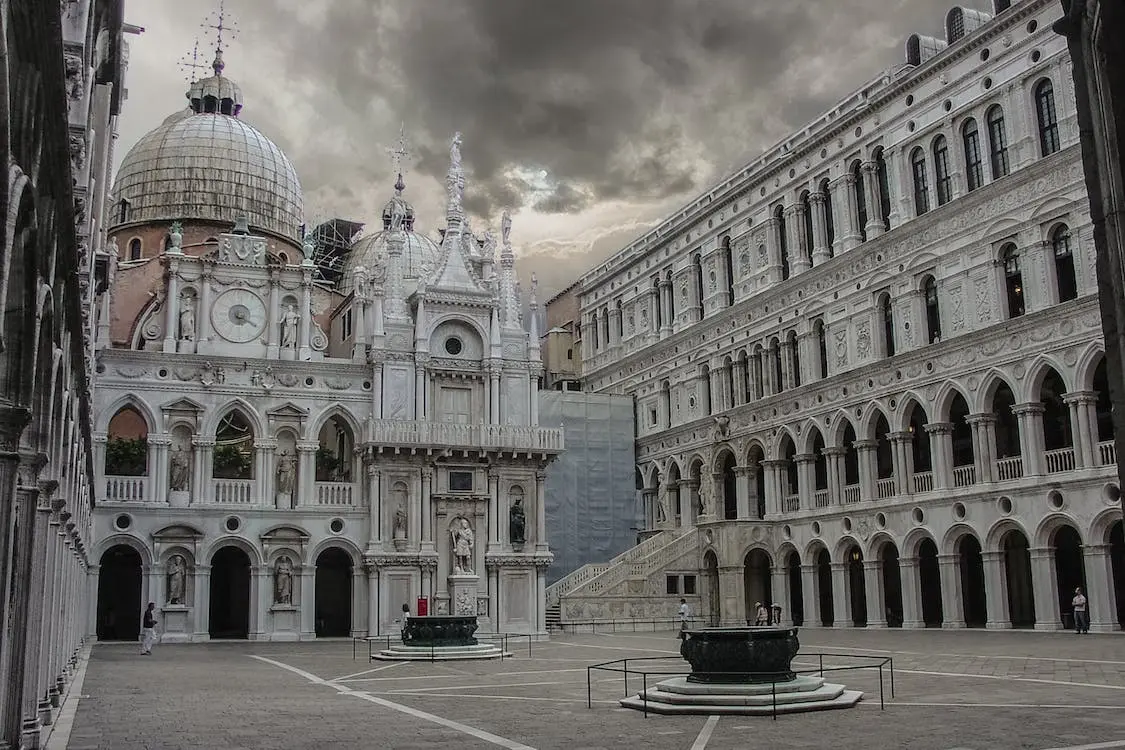Italy, a country renowned for its rich history, cultural heritage, and architectural marvels, is home to some of the most enchanting palaces in the world. These palaces, scattered throughout the country, offer a glimpse into Italy’s opulent past and showcase the extraordinary craftsmanship and artistic prowess of different eras. From the grandeur of the Reggia di Caserta and the breathtaking Palace of Venaria to the Renaissance splendor of Palazzo Pitti and the iconic Palazzo Ducale in Venice, these palaces transport visitors to a world of timeless beauty and elegance.
One of Italy’s crown jewels, the Reggia di Caserta, with its magnificent gardens and the famous Caserta Palace Staircase, stands as a testament to the opulence of the Bourbon dynasty. In Turin, the Palace of Venaria impresses with its Baroque architecture and extensive gardens, while Palazzo Pitti in Florence combines Renaissance and Baroque styles, housing remarkable art collections and the stunning Boboli Gardens. Meanwhile, the Palazzo Ducale in Venice, overlooking St. Mark’s Square, is enchanting with its Gothic grandeur and the legendary Bridge of Sighs.
These palaces, including Palazzo Reale in Naples, Palazzo dei Normanni in Palermo, and Palazzo Borghese in Rome, each possess their own unique charm and historical significance. Whether it’s the intricate mosaics of Palazzo dei Normanni, the extensive art collection of Palazzo Borghese, or the opulent royal apartments of Palazzo Reale, these palaces offer an unforgettable experience. Each visit promises to transport visitors to a bygone era, where luxury, art, and architectural magnificence converge.
Here is the list of the best Palaces of Italy
Palace of Venaria: Situated near Turin, the Palace of Venaria is a captivating example of Baroque architecture. This former royal residence features sprawling gardens, fountains, and a majestic courtyard. The palace itself boasts lavishly decorated rooms, gilded ceilings, and stunning frescoes. Visitors can explore the Hall of Diana, the Hall of the Great Gallery, and the Hall of Hercules, among other opulent spaces.
Reggia di Caserta: The Reggia di Caserta, located in Campania, is often referred to as the “Versailles of Italy.” This magnificent palace is a UNESCO World Heritage site and boasts a colossal architectural presence. Its opulent interiors, including the iconic Caserta Palace Staircase, designed by Luigi Vanvitelli, leave visitors in awe. The grand staircase features an impressive double-ramp design with intricate details, marble sculptures, and frescoes, making it a true masterpiece of Baroque architecture.
Palazzo Pitti: Located in Florence, Palazzo Pitti is a vast palace that served as the residence of the Medici family. It showcases a harmonious blend of Renaissance and Baroque styles. The palace houses several museums, including the Palatine Gallery, which exhibits an extraordinary collection of Renaissance art. The Boboli Gardens, adjacent to the palace, are a picturesque oasis with fountains, sculptures, and stunning panoramic views of Florence.
Royal Palace of Caserta: Situated in Caserta, the Royal Palace of Caserta is a colossal architectural marvel. This grandiose palace was built for the Bourbon kings of Naples and is renowned for its sheer scale and opulence. The palace’s interiors are adorned with exquisite frescoes, sumptuous furnishings, and intricate details. The centerpiece is the awe-inspiring Grand Staircase, a monumental double-flight staircase adorned with statues, balustrades, and grandiose decorations.
Palazzo Reale, Naples: Located in the heart of Naples, Palazzo Reale is a testament to the opulence of the Bourbon era. The palace’s lavishly decorated rooms, elegant royal apartments, and extensive art collection make it a captivating destination. Highlights include the Palatine Chapel, with its stunning frescoes, and the Tapestry Gallery, which showcases a remarkable collection of Flemish tapestries.
Palazzo dei Normanni: Perched on a hill in Palermo, Sicily, Palazzo dei Normanni is a remarkable example of Arab-Norman architecture. This palace was built during the 9th century and underwent subsequent additions and modifications. Its most famous feature is the Cappella Palatina, an exquisite chapel adorned with intricate Byzantine mosaics, marble columns, and ornate wooden ceilings.
Palazzo Ducale, Venice: Overlooking the iconic St. Mark’s Square, Palazzo Ducale, or the Doge’s Palace, is a symbol of Venetian power and wealth. This Gothic masterpiece impresses visitors with its stunning pink and white marble facade, elegant arches, and delicate tracery. Inside, the palace houses a series of opulent chambers, including the Senate Hall, the Hall of the Great Council, and the Doge’s Apartments. The famous Bridge of Sighs connects the palace to the New Prison.
Royal Palace of Turin: Once the home of the House of Savoy, the Royal Palace of Turin is a grandiose architectural gem. Its magnificent facade gives way to lavishly decorated halls, splendid salons, and a vast armory. Visitors can marvel at the Royal Library, the Royal Apartments, and the beautiful Gardens of the Royal Palace.
Palazzo Borghese, Rome: Nestled in the heart of Rome, Palazzo Borghese is a splendid palace that houses the renowned Galleria Borghese. Built in the 17th century, the palace features stunning architecture and serves as the backdrop for a magnificent art collection. Visitors can admire masterpieces by Caravaggio, Bernini, Raphael, and Titian, among others. The palace’s opulent rooms, adorned with frescoes, intricate stucco work, and ornate furnishings, transport visitors back to the golden age of Italian art and culture.
Palazzo Vecchio, Florence: Dominating the iconic Piazza della Signoria, Palazzo Vecchio is a symbol of Florence’s political and cultural history. This medieval fortress-turned-palace showcases a blend of architectural styles, including Romanesque, Gothic, and Renaissance. Inside, visitors can explore the impressive Salone dei Cinquecento, adorned with monumental frescoes by Vasari, and the opulent private apartments of the Medici family. The tower of Palazzo Vecchio offers panoramic views of Florence’s historic center, providing a breathtaking vantage point.
Conclusions:
In conclusion, Italy boasts some of the most enchanting palaces that capture the essence of its rich history and architectural grandeur. These palaces, such as the Palazzo Pitti in Florence and the Palazzo dei Normanni in Palermo, offer visitors a glimpse into the opulent lifestyles of Italian nobility throughout the centuries. With their intricate designs, magnificent artworks, and sprawling gardens, these palaces transport visitors to a bygone era of elegance and refinement.
Furthermore, the palaces of Italy serve as living testaments to the country’s artistic and cultural heritage. The Palace of Venaria in Turin, for instance, showcases breathtaking Baroque architecture and houses world-class art collections, serving as a reminder of Italy’s significant contributions to the arts. Moreover, the Palazzo Reale in Naples presents a fusion of architectural styles, reflecting the city’s rich cultural diversity. Whether it’s the ornate decorations of the Palazzo Vecchio in Florence or the majestic halls of the Royal Palace of Caserta, each palace tells a unique story, leaving visitors in awe of Italy’s cultural richness.






